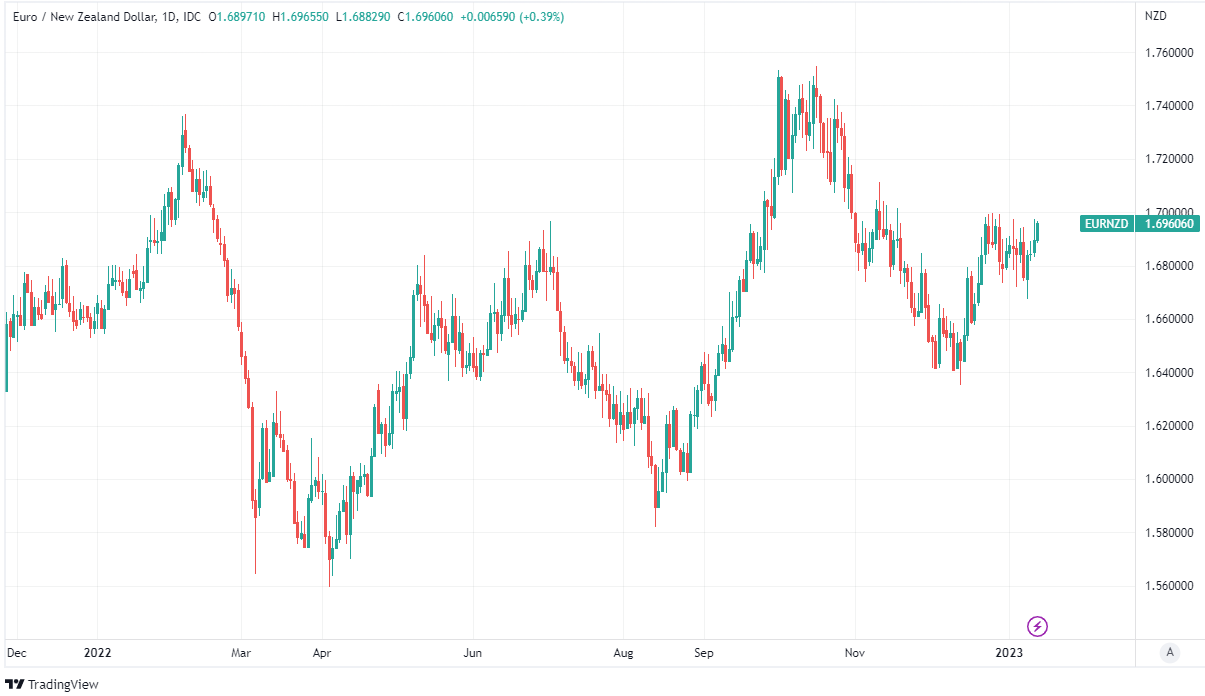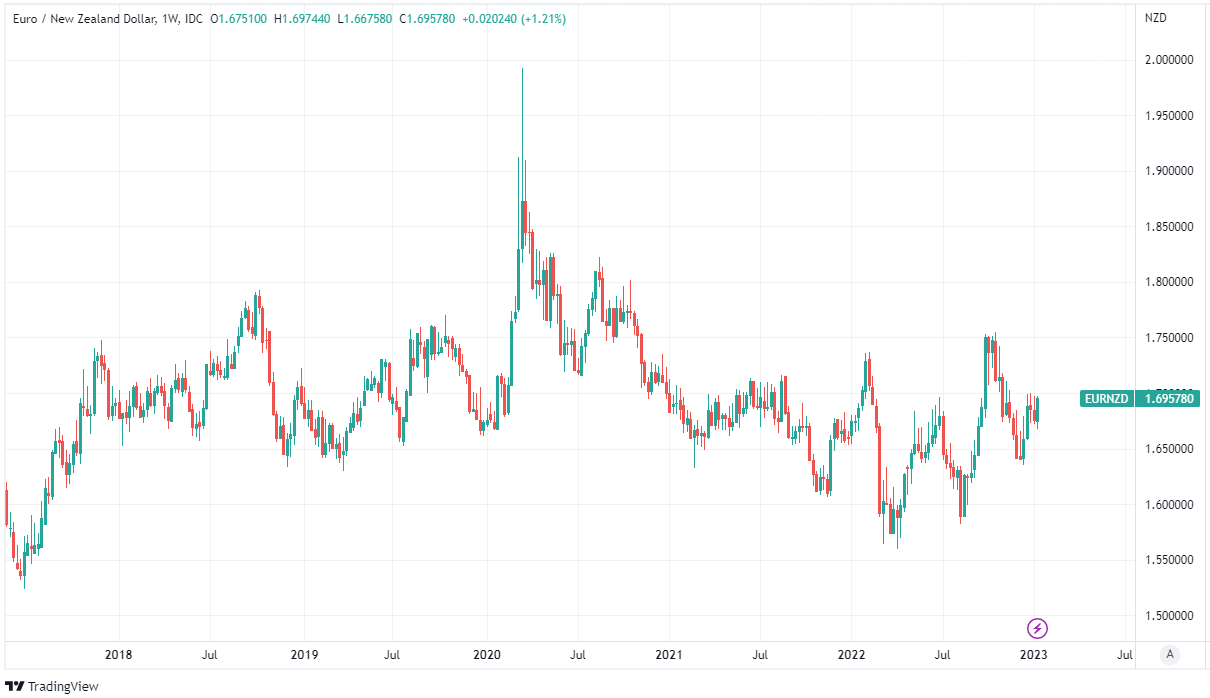New Zealand Dollar Bought for Euros in TS Lombard's Top China Trade Tip
- Written by: James Skinner
-
But, right now, economic surprises are positive and trending upwards and the Chinese reopening trade clearly has momentum. We go short EUR/NZD" - TS Lombard.

Image © Adobe Stock
The New Zealand Dollar and economy are well placed to benefit from the reopening and normalisation of activity underway in China while selling the Euro for the Kiwi is potentially the best way to capitalise on this in the currency market, according to research from TS. Lombard.
New Zealand Dollar exchange rates are a mixed bag of performances so far in January while the Kiwi has recently fallen against the Euro but TS. Lombard is wagering that EUR/NZD will fall notably this year as the shape of the economic recovery in China becomes clearer.
"This is not a normal cyclical recovery – consumers will drive the rebound, not investments. That means Chinese demand for industrial commodities is likely to undershoot expectations," says Skylar Montgomery Koning, a senior global macro strategist at TS Lombard.
"Fuel and catering-related commodities should get a boost (i.e., energy and agricultural products). Tourism is certain to benefit, too. This is important for the trajectory of DM policy since there is unlikely to be a large inflationary impulse," she writes in a Wednesday research commentary.
Many currencies including the Kiwi received a boost in December as China began to abandon a strict framework of rules used in attempts to contain the coronavirus over recent years, which culminated in a Lunar New Year lifting of restrictions on travel to and from the country.
 Above: EUR/NZD shown at daily intervals.
Above: EUR/NZD shown at daily intervals.
The foremost beneficiary of this in the currency market has been the Australian Dollar while the Canadian Dollar, Pound Sterling and Euro have each also benefited too but TS Lombard's Koning sees the Kiwi economy and Dollar as likely to win out over all others in developed markets as the year rolls on.
"New Zealand is well positioned for this China rebound. New Zealand is a small export-oriented economy with a heavy exposure to tourism, largely from Asia. Because the country reopened later than the rest of DM, it is still benefitting," Koning says.
"Admittedly, the RBNZ is orchestrating a recession; and, as in all the other high-beta economies, risks are posed by the housing market. But, right now, economic surprises are positive and trending upwards and the Chinese reopening trade clearly has momentum. We go short EUR/NZD," she adds.
Just as importantly for EUR/NZD, the market may have overestimated the extent to which the Euro can be expected to benefit from the rebound in China owing to the effects of high energy prices on industry and other factors.
"We note that a string of positive news recently has been bullish, but the economy is still very dependent on energy, and its relationship to China has shifted," Koning writes in a Wednesday research briefing.
 Above: EUR/NZD shown at weekly intervals. If you are looking to protect or boost your international payment budget you could consider securing today's rate for use in the future, or set an order for your ideal rate when it is achieved, more information can be found here.
Above: EUR/NZD shown at weekly intervals. If you are looking to protect or boost your international payment budget you could consider securing today's rate for use in the future, or set an order for your ideal rate when it is achieved, more information can be found here.
"China is behind a structural break in the EA current account and increased demand from China for energy, likely means they are now competing with Europe for supply," she adds.
Energy price factors are not as large headwinds for the Kiwi economy, which is far more oriented things like agriculture and tourism than those in Europe and this is also why a resumption of outbound travel from China might ultimately benefit the New Zealand economy more.
Meanwhile, the Reserve Bank of New Zealand (RBNZ) monetary policy stance appears on course to leave the Kiwi with one of the highest interest rates within the G10 grouping of economies and this is another prospective source of support for the New Zealand Dollar.
"DM central banks, which are well into their tightening cycles, are already downshifting and will likely be turning sharply dovish in 2H23 on the back of a global recession (we expect the Fed to cut to 2.75% by end-23)," Koning says.
"While that turn is still many months away, there is a clear bias for the market to fight the Fed (terminal rate expectations have stuck steadfastly around 5% despite Fed hawkishness)," she adds.





